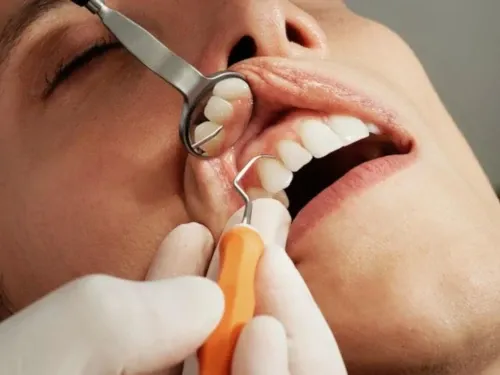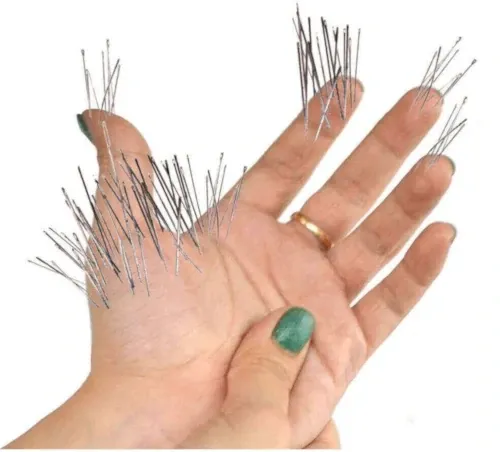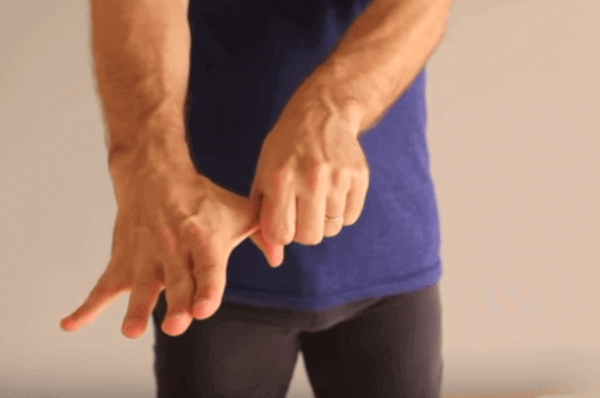Interlace the fingers of both hands. Then rotate your wrists so your palms face forward. You’ll feel stretching near the base of each finger and in your palms. Hold it there for 2 seconds and relax. Drop your hands and shake them out. Your hands will feel warm, which means blood flow is increasing in your hands. That’s a good sign! Repeat this stretch once again.
Best Hand Exercises for Dental Hygienists
From Dr. Z - Carpal tunnel syndrome specialist
Best Hand Exercises for Dental Hygienists
Table of Contents
- Overview
- How Carpal Tunnel Starts
- Prevent Carpal Tunnel With a Quick Routine
- Four Core Stretching Exercises
1) Finger interlace stretch
2) Stop stretch
3) Prayer stretch
4) Thumb stretch
- Summary
- FAQs
- About
Overview
Every dental hygienist understands how vital healthy hands are to their career. But few professions place as much repetitive stress on the hands and wrists. The constant pinching, gripping, polishing, and twisting motions performed throughout the day make dental hygienists especially vulnerable to carpal tunnel syndrome and other overuse injuries.
Many hygienists have seen colleagues forced to reduce their hours—or even leave the profession—because of hand pain or numbness. Fortunately, this outcome can be prevented. With the right stretching and strengthening exercises, you can protect your wrists and fingers, reduce tension in the tendons, and keep circulation flowing freely through the carpal tunnel.
These exercises aren’t complicated, and they don’t require special equipment. What they do require is consistency. A few minutes of focused hand exercises before, during, and after your workday can make a remarkable difference in how your hands feel and perform.
This article highlights the best hand exercises for dental hygienists—simple, practical routines designed to keep your hands strong, flexible, and pain-free so you can continue doing the work you love for years to come.
- FIND OUT: do Think you have carpal tunnel? Complimentary self-test
- Already know you have carpal tunnel?
This Quiz tells you its severity
How Carpal Tunnel Starts
Carpal tunnel syndrome usually begins quietly. In the early stages, symptoms are subtle—occasional tingling, mild numbness, or a dull ache in the hands and wrists, often noticed at night. Many people simply “shake out” their hands to make the discomfort fade, not realizing that these are the first signs of a progressive condition.
Over time, those nighttime symptoms start creeping into the daytime. The tingling turns into burning, pain, or weakness—sometimes even shooting “electric shocks” sensations through the fingers. Tasks that once felt routine, like gripping instruments or holding a toothbrush, suddenly become uncomfortable or awkward.
This is when most people begin searching for relief. A common first step is buying a wrist brace from a local pharmacy and wearing it constantly. But few realize that carpal tunnel braces should be worn primarily at night, not all day. Continuous use can actually make symptoms worse by weakening wrist and hand muscles.
Without early, targeted treatment, mild symptoms can quickly progress to moderate or severe stages—often within just a few months. Unfortunately, this pattern is especially common among dental hygienists. In fact, the Journal of Dental Hygiene reports that about 75% of hygienists experience hand problems, and more than half show classic signs of carpal tunnel syndrome.
Prevent Carpal Tunnel With a Quick Routine
Carpal tunnel syndrome doesn’t have to rule your life. If you follow an aggressive stretching protocol, you can keep symptoms at bay and in most cases eliminate them. The plan takes only a minute to do in between patients - which is tiny investment of time that pays huge dividends.
These are simple and fast exercises you can do between patients. To get the maximum benefit, you must do the 4 Core Stretching Exercises below. The benefit of each individual exercise is:
- Lubricates tendons from the fingers to the forearm
- Increases blood flow to the hand & fingers
- Breaks up tendon adhesions from the fingers to the forearm
- Drains fluid from deep inside the wrist joint
Four Core Stretching Exercises
1. Finger interlace stretch
2. Stop stretch
3. Prayer stretch
4. Thumb stretch
Summary
Dental hygienists are especially vulnerable to carpal tunnel syndrome because of repetitive pinching, twisting, and gripping motions. This article presents a quick, effective set of hand exercises you can perform between patients to lubricate tendons, increase circulation, and break up adhesions. The four core moves—finger interlace stretch, stop stretch, prayer stretch, and thumb stretch—are designed to protect your wrists, reduce strain, and help prevent the progression of symptoms. If these exercises aren’t enough, the article also offers next-step options to explore with Dr. Z and the CarpalRx team.
FAQs
Q: Why do dental hygienists need special hand exercises?
A: Dental hygienists perform constant pinching, gripping, and twisting motions that put enormous strain on the wrist tendons and median nerve. Regular hand exercises help prevent inflammation, reduce fatigue, and lower the risk of developing carpal tunnel syndrome.
Q: How often should I do these exercises?
A: Ideally, you should perform them several times a day—before work, between patients, and after your shift. Frequent, gentle stretching keeps your wrists flexible and your circulation healthy, which is key to avoiding pain and stiffness.
Q: Can hand exercises alone prevent carpal tunnel syndrome?
A: Hand exercises are one of the best preventive measures, but they’re most effective when combined with proper posture, ergonomic positioning, and scheduled breaks. If symptoms persist or worsen, professional therapy or targeted treatment may be needed to fully relieve pressure on the median nerve.









